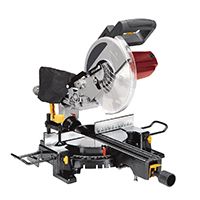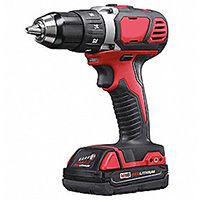We may be compensated if you purchase through links on our website. Our team is committed to delivering honest, objective, and independent reviews on home products and services.
Project details
Skill
Cost
Estimated Time
Transforming an old bookcase into a functional kitchen island is a smart way to add storage and workspace to your kitchen. With just some paint, a few tools, and some creativity, you can breathe new life into a dated piece of furniture. Read our guide below to learn how to upcycle a bookcase into a kitchen island.
Tools and Materials
Gather the following items before getting started on this do-it-yourself project:
- (1) 1 x 2 x 8 Board
- (1) 1 x 8 x 6 Board
- 1 1/4″ Pocket Hole Screws
- 1 1/4″ Finish Nails
- Contact Paper – Marble
- Emerald® Urethane Trim Enamel
- Roller Tray and Liners
- Wood Filler
Preparing the Bookcase To Convert To a Kitchen Island
You’ll need to prepare the bookcase before you proceed with your project. Proper preparation will lead to a smooth surface for painting and other tasks.
Removing the Back Panel
Start by removing the back panel of the bookcase. This opens up shelving from both sides, and makes your kitchen island more functional. Use a screwdriver or pry bar to carefully detach the back panel without damaging the structure.
Cleaning and Repairing
Clean the bookcase with warm water and mild detergent to get rid of dirt or grime. Once it’s clean, inspect it for any dents or scratches. Fill any imperfections with wood filler and let the bookcase dry. Sand the filled areas smooth using a 220-grit sanding sponge to get an even surface on which you can paint.

Adding Decorative Trim
Add decorative trim pieces to give your kitchen island a more finished look. You can attach a 1-inch-by-3-inch board to the base of the bookcase to cover any exposed edges, for example. Secure the trim with finish nails, then fill the nail holes with wood filler. Once your work is dry, sand the area smooth.
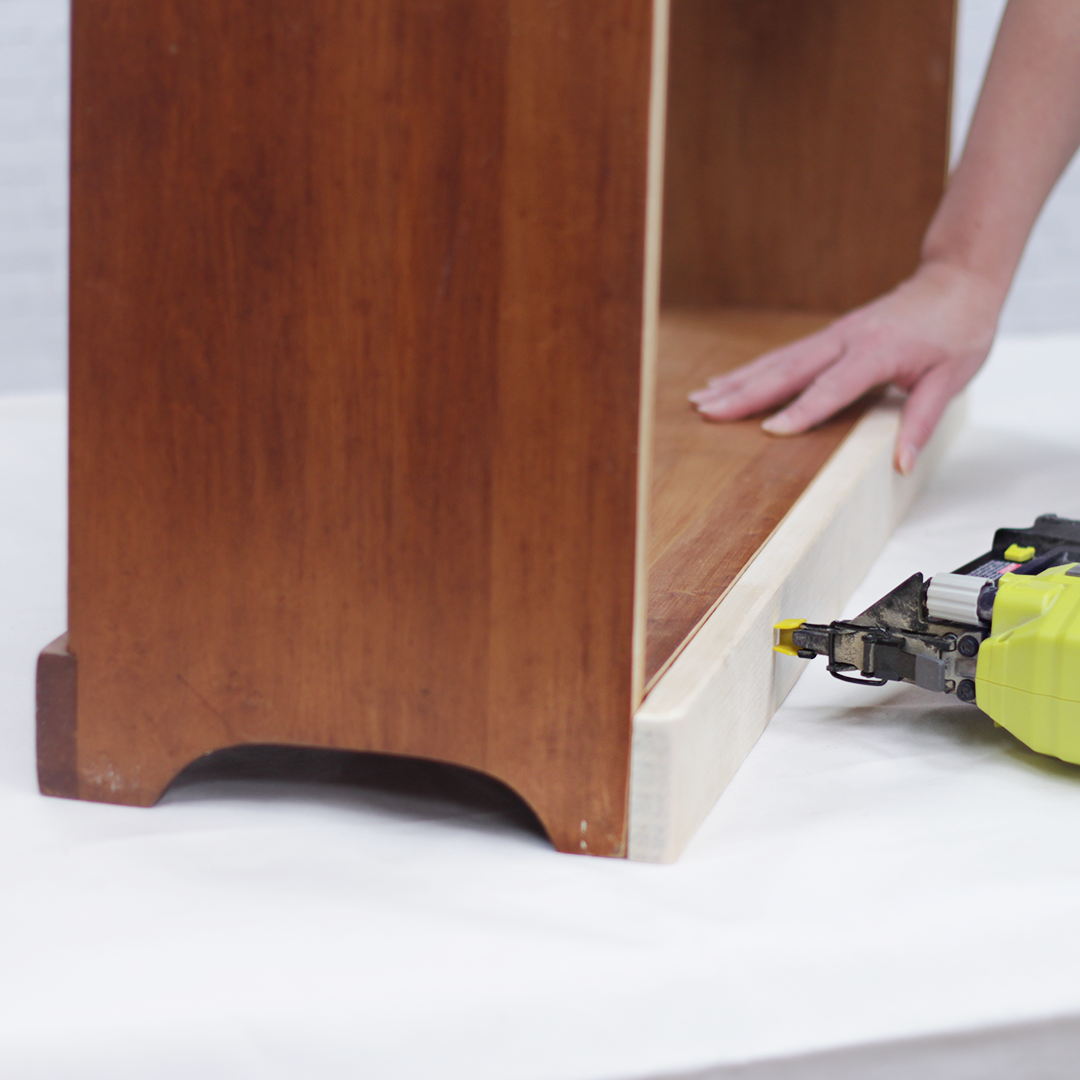
Priming and Painting the Bookcase
A fresh coat of high-quality paint can totally change the look of your upcycled kitchen island. Read how to correctly paint below.
Applying Primer
Start by applying Sherwin-Williams Extreme Bond Primer. This product will give you glossy surfaces, and can spare you the chore of heavy sanding. Use a 2 1/2-inch angled synthetic brush for the corners and trim. For larger surfaces, such as the shelves and sides, use a 3/8-inch nap roller.
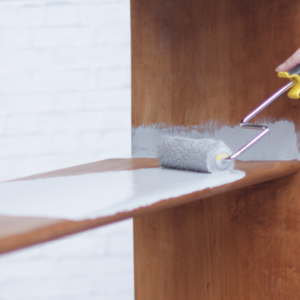
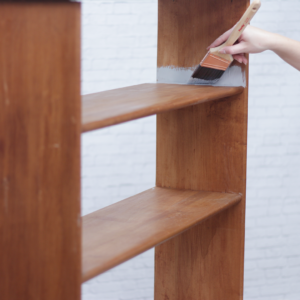
Painting the Bookcase
Once the primer dries, you can begin painting. Consider Sherwin-Williams Emerald Urethane Trim Enamel, which is durable and resistant to wear. This paint holds up well in areas that require frequent cleaning, which makes it perfect for a kitchen island. Follow the steps below to paint.
- Use a brush to paint the corners and trim pieces.
- Fill a paint tray and use a roller to apply paint to the flat surfaces.
- Allow the first coat to dry completely.
- Lightly sand the surface with a 220-grit sanding sponge to get a smooth finish.
- Apply a second coat for full coverage.
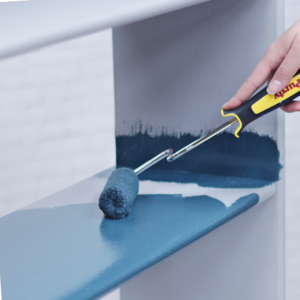
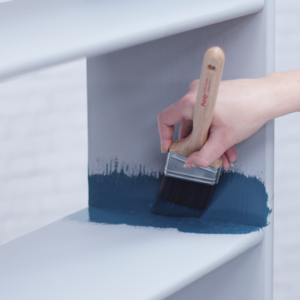
Creating a Custom Worktop for the Bookcase
A new worktop will complete your project. This step makes your piece stylish and practical.
Assembling the Top
Follow the steps below to create a sturdy worktop:
- Cut two 1-inch-by-8-inch boards to lengths that are 2 inches longer than the width of the bookcase’s top.
- Join the boards with pocket screws.
- Attach 1-inch-by-2-inch boards with finish nails.
- Fill any nail holes with wood filler, and sand the area smooth once it’s dry.

Adding a Protective Surface
Cover your new worktop with self-adhesive contact paper to protect it and give it a polished look. Smooth out any bubbles as you apply the paper. Wrap it over the top of the worktop, down the sides, and around the bottom edge for a clean finish.
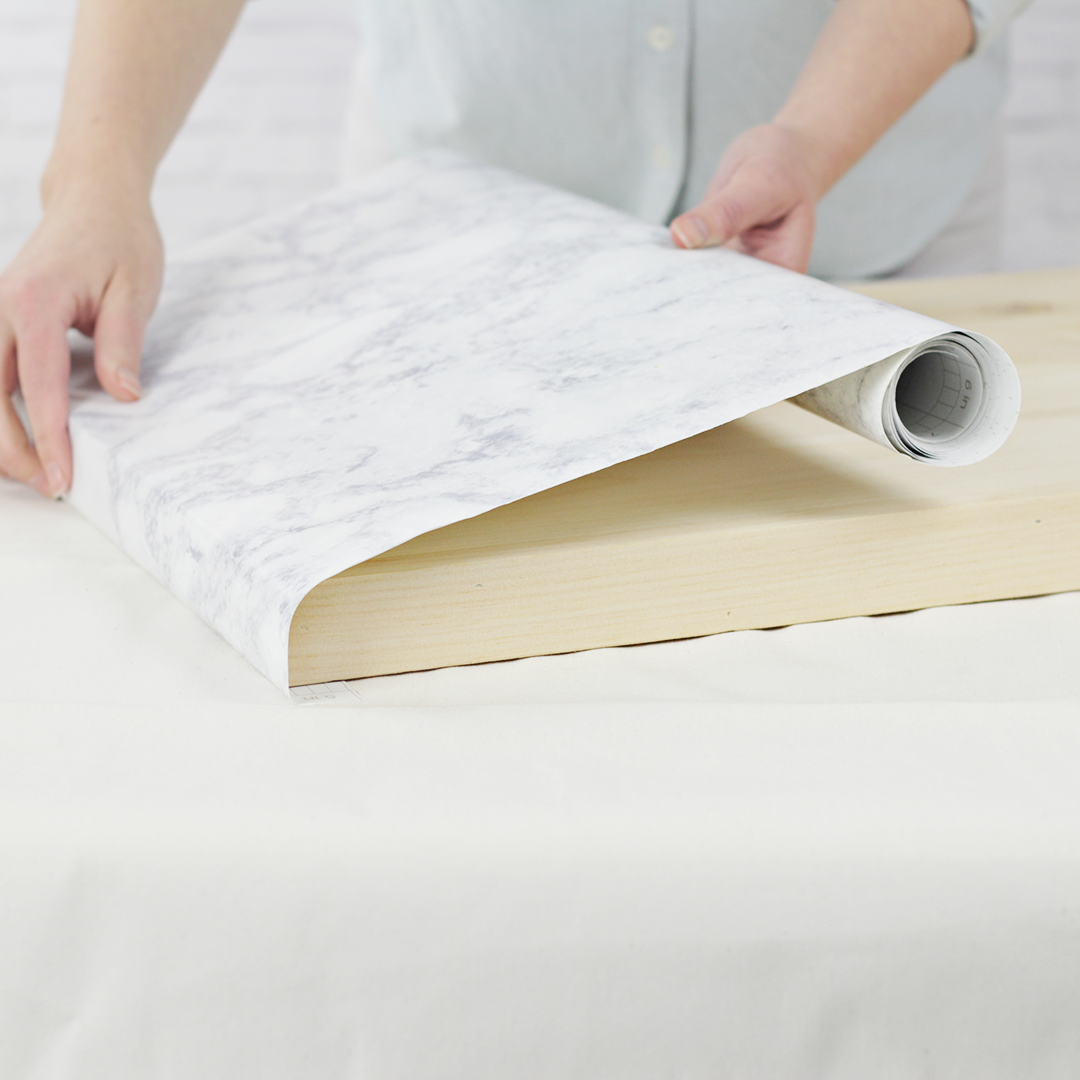
Attaching the Worktop
Center the worktop on the bookcase. Drive screws up through the top of the bookcase into the underside of the worktop. Make sure the screws are long enough to hold your work together without poking through the worktop.
Customizing Your Kitchen Island
Now that you’ve assembled most of your kitchen island, you can add some custom features to fit your kitchen’s needs.
Adding Storage Solutions
Make the most of your kitchen’s new storage by incorporating some of the ideas below.
- Add small baskets or bins to the shelves to organize smaller items.
- Attach a paper towel holder to one end.
- Install a pull-out trash can.
- Install hooks on the sides of the structure on which you can hang kitchen towels or utensils.
Incorporating Seating
Turn one side of your island into a casual seating area. Follow the steps below.
- Measure the height of your island and buy bar stools that can fit.
- Make sure there’s enough overhang on the worktop to accommodate comfortable seating.
- Add a footrest bar for additional comfort.
Enhancing Mobility
Attach casters to the bottom of your structure so that you can move the island easily. Choose locking casters to keep the island stable when you’re using it.
Finishing Touches on Your New Kitchen Island
Elevate your upcycled kitchen with the few final details below.
Installing a Towel Rack
Add a towel rack by attaching a small towel bar to one of the sides. This provides a handy place from which you can easily reach towels while you’re cooking.
Adding a Chalkboard Panel
Install a chalkboard panel on one side of the bookcase. You can use this to jot down notes, make shopping lists, or scribble down recipes. Simply paint a section of the side panel with chalkboard paint for a creative touch.
Lighting Options
Add under-shelf lighting to your kitchen island for a decorative touch. You can easily install battery-operated LED strip lights, which will enhance the ambiance of your kitchen workspace.
Maintaining Your Upcycled Kitchen Island
Follow the tips below to properly maintain your new kitchen island and keep it looking great.
Cleaning the Surface
Clean the surfaces you’ve painted with a mild soap and water solution. Avoid using harsh chemicals or abrasive cleaners that could damage the paint finish.
Touch-ups and Repairs
Your kitchen island may show signs of wear over time, so keep some paint, contact paper, and other supplies handy in case you need to perform touch-ups.
Seasonal Maintenance
Perform regular inspections and touch-ups to make sure your island is stable and that its features are in good working condition. Look at hooks, casters, or lighting from time to time.



